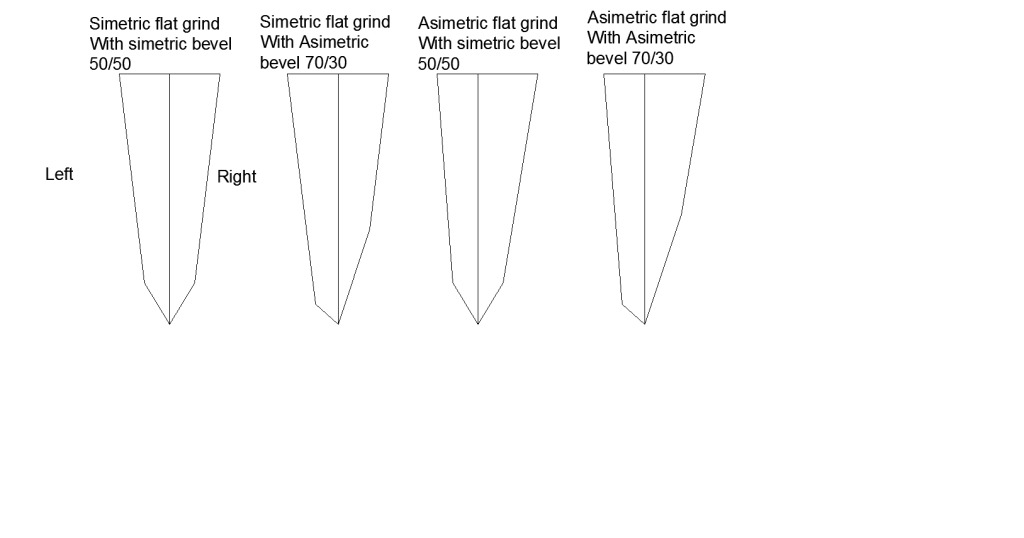orangehero
Senior Member
- Joined
- Nov 3, 2013
- Messages
- 386
- Reaction score
- 201
Can someone please comment if I'm understanding correctly?
For a typical double-bevel right-hand guyto, the right side secondary bevel is generally ground convex and with greater convexity than the left side, which can also be flat or concave.
The greater convexity of the right side improves food release. What this also results in is a force to the left when cutting through something. In order to counter this the primary bevel is ground asymmetrically as well, with the right side primary bevel at a more obtuse angle than the left side primary bevel. This also follows the secondary bevel geometry (right side more obtuse than the left side). To control steering, the goal during sharpening is to both maintain the appropriate angle for each side of the primary bevel while also keeping the edge apex centered.
I think I read the relationship between the angles of the two sides correctly in the previous comments.
For a typical double-bevel right-hand guyto, the right side secondary bevel is generally ground convex and with greater convexity than the left side, which can also be flat or concave.
The greater convexity of the right side improves food release. What this also results in is a force to the left when cutting through something. In order to counter this the primary bevel is ground asymmetrically as well, with the right side primary bevel at a more obtuse angle than the left side primary bevel. This also follows the secondary bevel geometry (right side more obtuse than the left side). To control steering, the goal during sharpening is to both maintain the appropriate angle for each side of the primary bevel while also keeping the edge apex centered.
I think I read the relationship between the angles of the two sides correctly in the previous comments.





